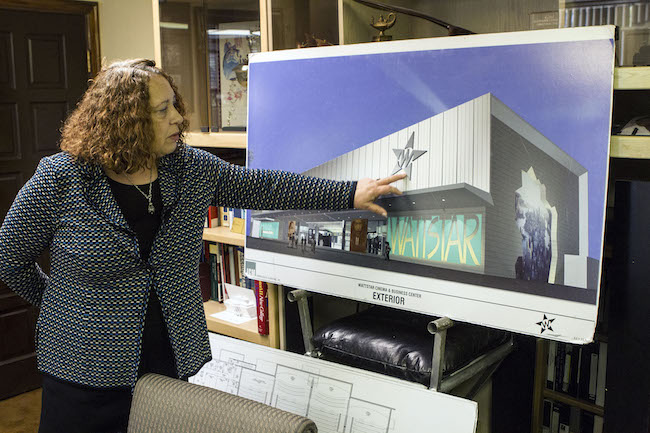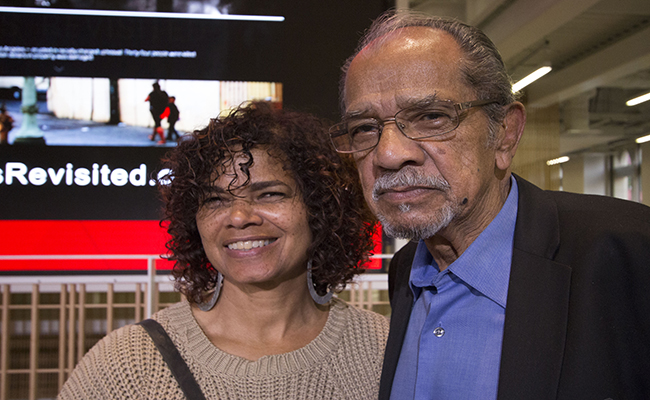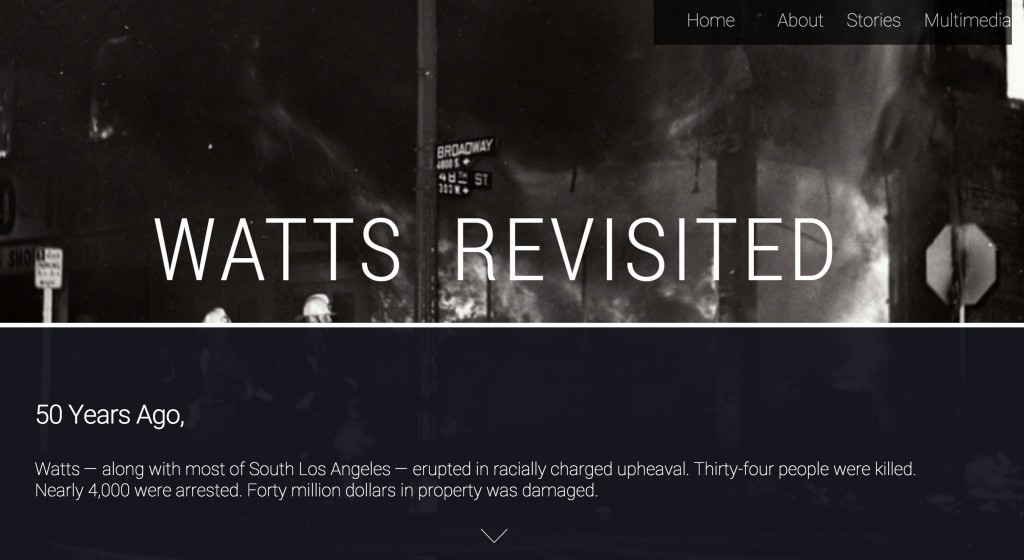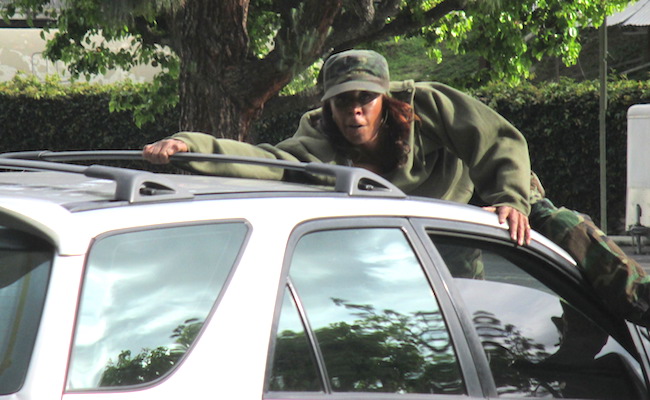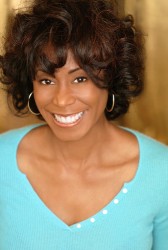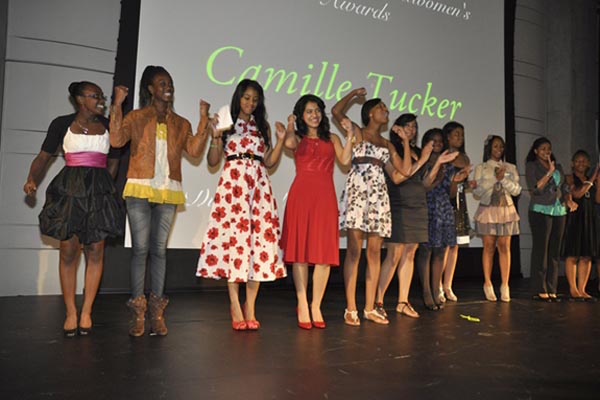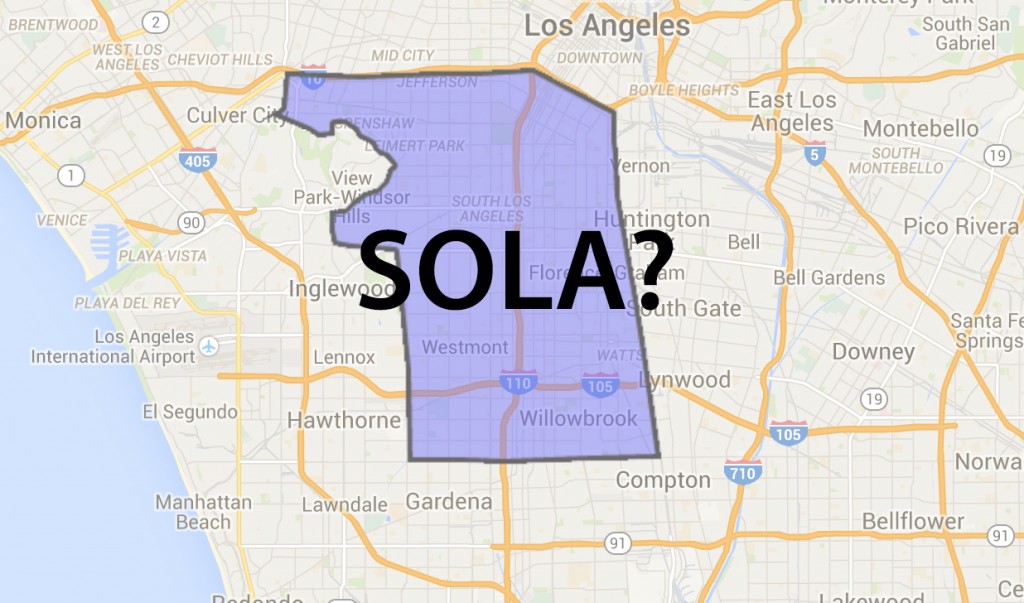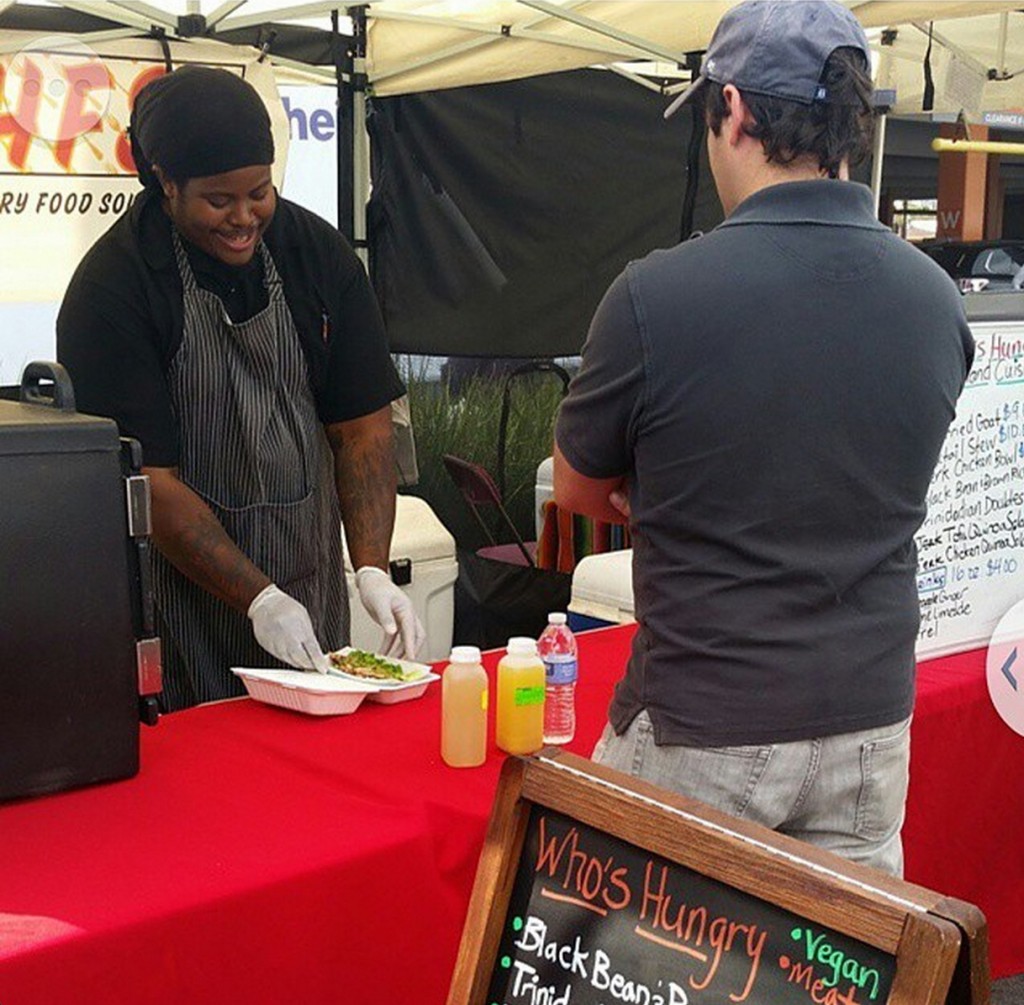By
Adrian Florido | KPCC (text and audio)
Maya Sugarman | KPCC (photos)
This article was produced for Watts Revisited, a multimedia project launched by the USC Annenberg School for Communication and Journalism that explores challenges facing South L.A. as we commemorate the 50th anniversary of the 1965 Watts Riots. Learn more at www.wattsrevisited.com.
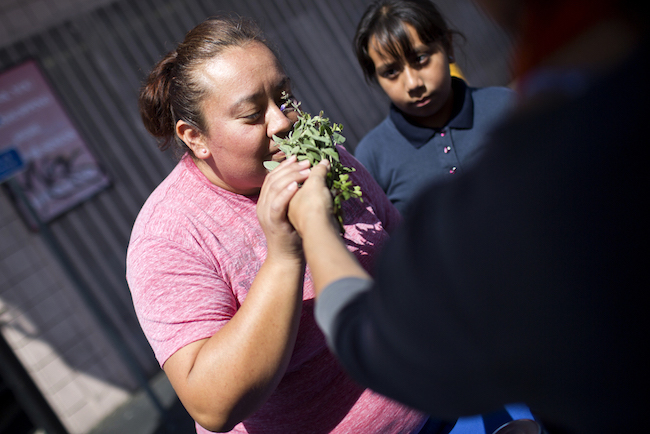
Mary Muñoz, left, and her daughter, Melanie, smell fresh herbs grown at one of Community Services Unlimited’s five mini-urban farm sites. | Photo by Maya Sugarman for KPCC
Each Friday afternoon, the corner of Western Avenue and 39th Street in South L.A. gets a little brighter. Just before 2 o’clock, Rosario Mireles pulls up in a utility truck, unloads crates of organic fruit and vegetables, and sets up a produce stand in the parking lot of a liquor store where addicts used to loiter.
The produce stand popped up not long after a nearby Ralph’s grocery store shut down in 2013, leaving only a Food 4 Less in the area, where neighbors say quality can be hit and miss. It’s one of a constellation of small efforts that nonprofits have launched to increase access to fresh produce across South L.A., where options are limited. They’ve included farmer’s markets, community and school gardens, and corner store conversions. [Read more…]











